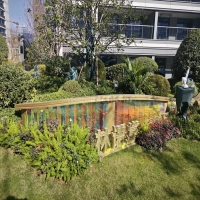Welcome to the website for landscape facilities products and knowledge.
How does WPC handle exposure to soil macrofauna inoculants?
Wood-plastic composites (WPC) are widely used in outdoor applications due to their durability and resistance to environmental factors. However, their interaction with soil macrofauna inoculants, such as earthworms, beetles, and other decomposers, is a critical aspect of long-term performance.
WPC's resistance to biodegradation stems from its synthetic polymer matrix, which shields the wood fibers from microbial and macrofauna activity. Studies show that while soil macrofauna may physically interact with WPC surfaces, their ability to break down the material is limited. The plastic component acts as a barrier, reducing enzymatic and mechanical degradation.
In controlled experiments, WPC samples exposed to soil macrofauna inoculants exhibited minimal weight loss and structural changes compared to untreated wood. This suggests that WPC's hybrid composition effectively mitigates the impact of soil organisms. However, prolonged exposure in highly bioactive soils may lead to surface erosion over time.
For optimal performance, manufacturers often incorporate additives like fungicides or UV stabilizers to further enhance WPC's resilience against soil macrofauna and other environmental stressors. Proper installation and maintenance also play a key role in preserving WPC's integrity in soil-rich environments.
Related search:

Recommendation
Metal and acrylic color-changing combined curtain wall for large-scale public landscape facilities